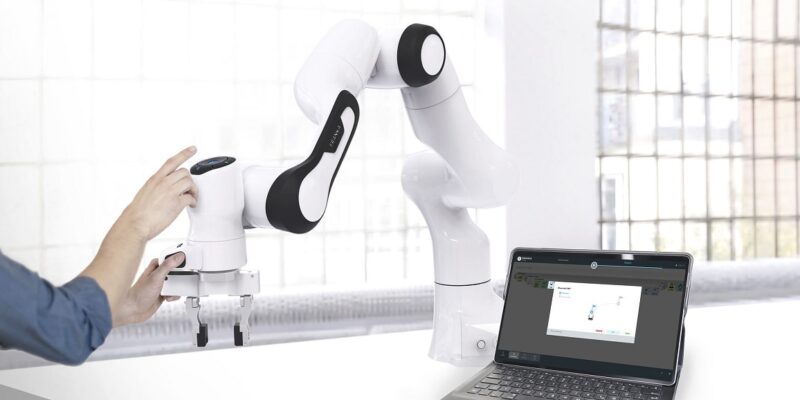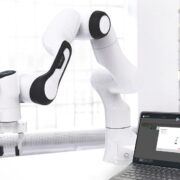
Are you curious about the future of human-machine collaboration? Machine learning has revolutionized how humans interact with machines, and with this new type of technology comes a new trend—collaborative robots (cobots). Cobots are designed to work alongside humans in factory settings and can be programmed to carry out specific tasks. With advanced AI capabilities, these cobots can learn from experience and adapt their performance over time.
This article will explore how cobots evolve using machine learning algorithms like deep reinforcement learning. We’ll look at why collaborative robots represent an exciting advancement for industrial automation and some warnings about potential risks associated with using them. By the end of this article, you should better understand what makes cobots unique and why they are set to become commonplace in the industry over the next few years.
What is a Cobot and How Does It Work
Robots have become increasingly popular in the tech industry, but have you ever heard of cobots? A cobot, short for collaborative robot, is a type of robot that is designed to work alongside humans. Unlike traditional robots, cobots are programmed to understand human behavior and adjust their movements to work safely around humans. The goal of cobots is to enhance human productivity rather than replace it.
How do they work? Cobots use sensors and cameras to detect human movements and control algorithms to adjust their movements based on the environment. This advanced technology allows cobots to safely complete tasks such as handling materials, assembling products, and even assisting with medical procedures. As technology advances, seeing even more ways cobots can make our lives more accessible will be exciting.
The Benefits of Cobots to Human-Machine Collaboration
Cobots have numerous benefits that make them attractive for businesses looking to improve efficiency and productivity. By working alongside humans, cobots can take on tasks that are too dangerous or repetitive for humans to perform, reducing the risk of injury and freeing up human workers to focus on more complex tasks. Additionally, cobots can work 24/7 without needing breaks or rest, leading to increased production and decreased downtime.
One of the most significant benefits of cobots is their ability to adapt and learn from experience through machine learning algorithms. It means they can continuously improve their performance over time, making them more efficient and effective in completing tasks. By collaborating with humans, cobots also have the potential for human workers to teach them new skills and approaches, leading to an even higher level of collaboration and productivity.
The Evolution of the Cobot – From Single-Purpose Machines to Complex Adaptive Systems
Cobots are evolving rapidly, moving beyond their initial purpose of carrying out repetitive tasks to becoming complex adaptive systems. Machine learning algorithms like deep reinforcement learning allow cobots to learn from experience and adapt their behavior based on feedback from their environment. It means they can improve their performance over time, becoming more efficient and effective in completing tasks.
Additionally, cobots can now work together in a team, with each robot learning from the others’ actions and adjusting their movements to cooperate seamlessly. This advancement has the potential to transform industrial automation by increasing efficiency and reducing errors, leading to cost savings for businesses.
Examples of Cobots in Use in the Automotive, Manufacturing, and Robotics Sectors
Cobots are already significantly impacting various industries, with the automotive, manufacturing, and robotics sectors at the forefront of implementing this technology. In the automotive industry, cobots are used for tasks such as welding and painting, while in manufacturing, they assist with assembly line processes. Cobots are used in the robotics sector to handle delicate materials and assist with intricate tasks.
The versatility and adaptability of cobots make them useful in a wide range of industries, from healthcare to agriculture. With the potential for continuous learning and improvement, these collaborative robots are set to become integral parts of various sectors in the coming years.
Trends Shaping the Future of Cobots
As technology continues to advance, the possibilities for cobots are endless. Some trends that may shape the future of cobots include advancements in artificial intelligence and machine learning, leading to even more complex adaptive systems. Additionally, there will likely be a rise in virtual and augmented reality technologies to enhance human-cobot collaboration.
Another trend is the development of mobile cobots that can move freely throughout a workspace, changing tasks and locations as needed. This flexibility will increase efficiency and productivity in various industries where processes may require multiple steps and movements.
Preparing for an Emergent Age of Human-Robot Interaction
As cobots become more prevalent in various industries, it is essential to consider the potential risks and challenges associated with their use. One of the main concerns is the displacement of human workers as automation increases. Businesses must have a plan to support and retrain displaced workers to ensure a smooth transition.
Additionally, there are ethical considerations regarding using cobots, such as the potential for biased algorithms or creating a dependency on technology. Addressing these concerns and establishing guidelines for the industry’s responsible and ethical use of cobots is essential.












